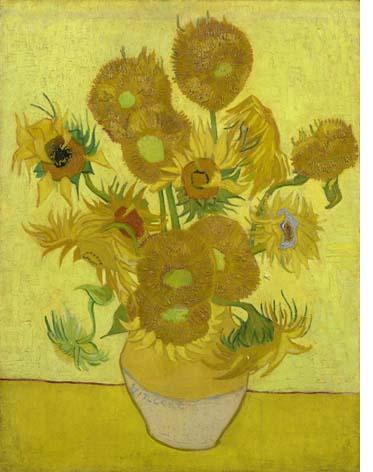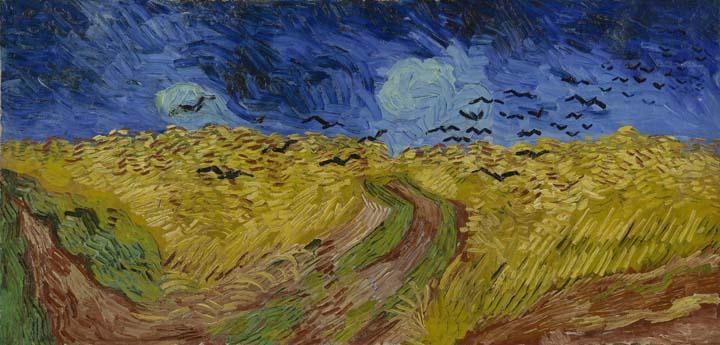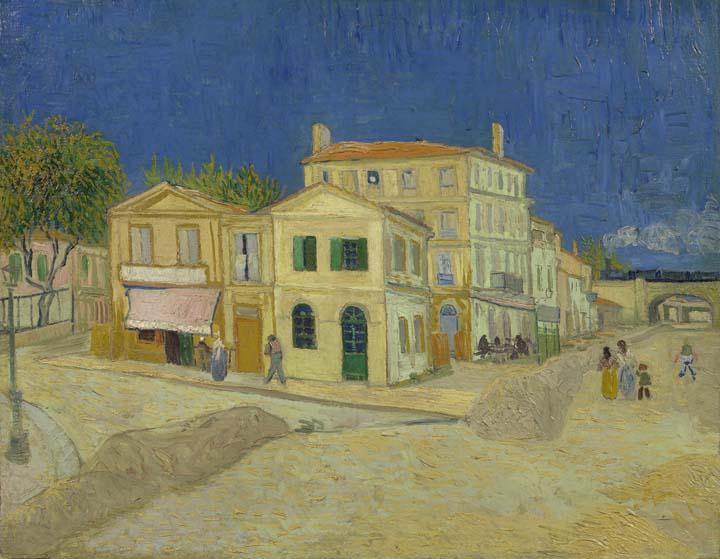Vincent Van Gogh, Briefly
Vincent Van Gogh is likely the
most beloved artist of all time. While there is no official poll on the subject, I propose that the large number of forgeries of his work, movies about the artist, and the continuing research on
authentication of his work proves that Van Gogh lives large in the popular imagination. And don’t forget the 1971 song “Vincent,” by Don McLean. Above, Wheatfield With
Crows, 1890, by Vincent Van Gogh; courtesy The Van Gogh Museum
Van Gogh (1853-90), the troubled Dutchman who became a painter after finding no fulfillment as an art dealer, lived in poverty as he effectively banished himself to the northern provinces to learn by drawing from life. His keen observation of peasants at work, portraits, and landscapes evolved quickly, as he worked every day, using chalk, and later ink and a reed pen. His ink drawings, with their calligraphic marks, prefigured the paintings he would later make in the south of France. During his ten years as an artist, he only worked regularly with paint for the last several years of his life, when his brother Theo, a successful art dealer, was able to provide Vincent with art supplies.
Above, The Yellow House
(The Street), 1888, by Vincent Van Gogh; courtesy The Van Gogh Museum
After moving to Paris in 1886 to be close to Theo, who was his lifeline in every possible way, Vincent found he needed a more contemplative way life. Two years later he left the bustle of Paris for Arles, where he felt more settled under the blazing sunshine of Provence. It was there that his mature style coalesced, as he produced a new painting nearly every day. The most iconic of these, The Starry Night; the five large sunflowers in a vase; The Reaper; The Café Terrace at Night; and Wheatfield with Crows, among them, are a pure expression in paint of his emotional and spiritual connection with nature. His use of brilliant color and the swirling brushstrokes that carve forms in thickly applied paint were unlike anything that had been seen before; his art was so off the grid of contemporaneous trends that he sold only one painting during his lifetime.

Van Gogh’s difficulty in maintaining friendships, and relationships with women, was one of his greatest discontents; a much-anticipated visit by fellow artist Paul Gauguin, in 1888, ended after two months of acrimonious discord. Van Gogh’s desire to establish an artist retreat in Arles also ended when he sought care at an asylum in Saint-Remy-de-Provence. It was here that be created many of the works that have made him the most forged artist of the modern age.
While his illness took an enormous toll on his daily life, Van Gogh buried himself in his work, regularly sending rolled-up canvases back to his brother, who began to show them in his Paris Gallery. During the last two months of his life, in Auvers-sur-Oise, Vincent worked feverishly, in an attempt to quell his torment. In a letter to Theo, he wrote of his obsession, “The more I am spent, ill, a broken pitcher, by so much more I am an artist.... [A] kind of melancholy remains within us when we think that one could have created life at less cost than creating art."
While his work paved the way for future artists of Fauvism, Expressionism, Modernism, and Contemporary Art, the Paris art world of his time was not yet ready for the intensity of his vision and the boldness of his expression. In his daily outings to the fields and gardens of Provence, Van Gogh established a Post-Impressionisht style that would influence artists including Edvard Munch, Franz Marc, Andre Derain, and more recently Francis Bacon and Peter Doig—and the song that ends, And when no hope was left in sight on that starry/ Starry night./ You took your life / As lovers often do; / But I could have told you Vincent / This world was never / Meant for one / As beautiful as you.




